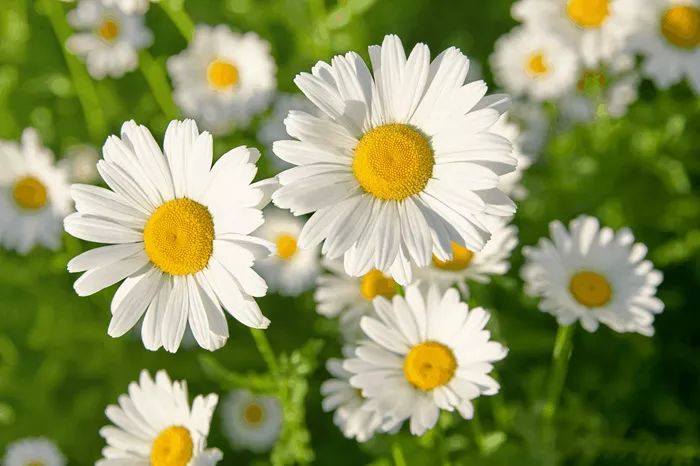Daisies are more than just cheerful blossoms in a garden; they are symbols of innocence, purity, and simplicity. These unassuming flowers have woven themselves into the fabric of human culture, art, and folklore. From the meadows of Europe to the gardens of North America, daisies have a timeless charm that resonates with people of all ages. Their delicate petals and bright centers evoke a sense of nostalgia and joy, making them a beloved choice for floral arrangements and garden designs. In this article, we will explore the rich symbolism, history, and cultural significance of daisies, uncovering the layers of meaning behind these humble yet enchanting flowers.
The Symbolism of Daisies
Daisies are often associated with innocence and purity. Their simple, unadorned beauty has made them a symbol of childhood and youthful exuberance. In many cultures, daisies are linked to the idea of new beginnings and fresh starts. This symbolism is rooted in their appearance and behavior. Daisies are perennials that bloom in the spring, often emerging from the ground after a long, cold winter. Their arrival heralds the start of a new season, bringing with it the promise of renewal and growth.
In the language of flowers, daisies convey a sense of loyalty and love. They are often given as gifts to express affection and admiration, especially in the early stages of a relationship. The daisy’s ability to thrive in a variety of environments also makes it a symbol of resilience and adaptability. These flowers can grow in meadows, gardens, and even along roadsides, demonstrating their hardiness and versatility.
Cultural Significance of Daisies
Daisies have a long and storied history in human culture. In ancient Rome, the daisy was considered a sacred flower, associated with the goddess Bellona, who was the deity of war. The Romans believed that daisies could protect soldiers in battle, and they often wore daisy garlands as a symbol of strength and courage. In medieval Europe, daisies were used in herbal medicine to treat a variety of ailments, from wounds to digestive issues. Their healing properties were highly valued, and they were often included in herbal remedies and potions.
In literature and art, daisies have been a recurring motif. William Shakespeare frequently referenced daisies in his works, using them to symbolize innocence and simplicity. In his play “Hamlet,” Ophelia is often depicted with daisies, highlighting her purity and vulnerability. In more recent times, daisies have been featured in numerous paintings and poems, often representing the beauty of nature and the simplicity of life.
Daisy Varieties and Their Meanings
There are many different varieties of daisies, each with its own unique characteristics and symbolic meanings. The common daisy (Bellis perennis) is perhaps the most well-known, with its small, white petals and yellow center. This variety is often associated with innocence and purity, making it a popular choice for weddings and other celebrations of new beginnings.
The Shasta daisy (Leucanthemum × superbum) is another popular variety, known for its larger, more showy flowers. Shasta daisies symbolize hope and new beginnings, making them a perfect gift for someone starting a new chapter in their life. The Gerbera daisy, with its vibrant colors and large blooms, is often associated with cheerfulness and happiness. These flowers are frequently used in floral arrangements to brighten up a room or to convey a sense of joy and excitement.
Growing and Caring for Daisies
Daisies are relatively easy to grow and care for, making them an ideal choice for both novice and experienced gardeners. They thrive in well-drained soil and require plenty of sunlight to bloom. Daisies are also relatively drought-tolerant, making them a good option for gardens in arid climates. To ensure healthy growth, it is important to water daisies regularly, especially during dry spells. Deadheading spent blooms can also help encourage new growth and prolong the flowering period.
When planting daisies, it is best to choose a location that receives full sun for at least six hours a day. Daisies can be grown from seeds or transplants, and they typically bloom in the spring and summer months. To add a touch of whimsy to your garden, consider planting daisies in clusters or along garden borders. Their cheerful blooms will add a splash of color and charm to any outdoor space.
Daisies in Modern Culture
In modern culture, daisies continue to hold a special place in our hearts. They are often used in floral arrangements for weddings, baby showers, and other celebrations, symbolizing innocence, purity, and new beginnings. Daisies are also popular in fashion and home decor, with their bright colors and simple shapes inspiring designers and artists.
In the world of beauty, daisies have become a symbol of natural beauty and simplicity. Many cosmetic brands use daisy extracts in their products, claiming that the flower’s natural properties can help soothe and rejuvenate the skin. In the realm of music and film, daisies have been referenced in numerous songs and movies, often symbolizing innocence and the beauty of nature.
Conclusion
Daisies are more than just pretty flowers; they are symbols of innocence, purity, and new beginnings. Their rich history and cultural significance make them a beloved choice for gardens, floral arrangements, and gifts. Whether you are planting daisies in your garden or giving a bouquet to a loved one, these flowers are sure to bring a sense of joy and simplicity to your life. With their timeless charm and enduring appeal, daisies remind us of the beauty and resilience of nature.


